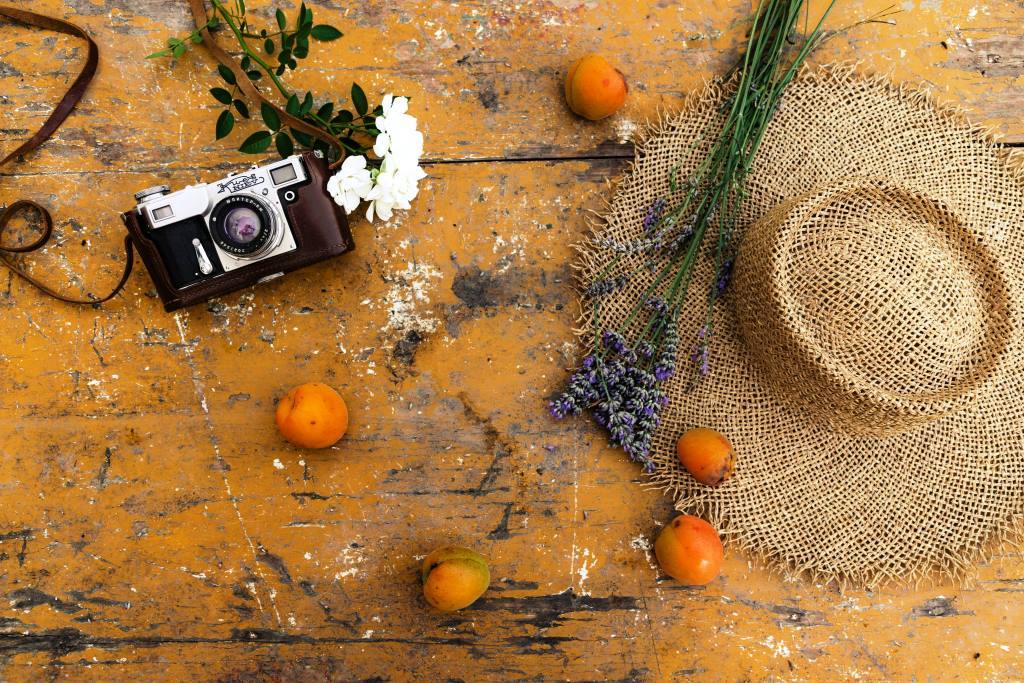Have you always wondered why the simple bird ‘ s-eye view of food on hoarding instantly attracts you? The knolling photography technique randomly grouped several objects to create a vibrant scene. These days flat lay photos are viral on Instagram. From individuals to companies, everyone is using a flat lay. Whether you want to hit social media with a beautiful pic or up your branding game, get mouth-watering images with our best and most effective strategies for professional quality flat-lay photos.
What is flat-lay styling and photography?
A flat-lay styling setup means beautifully arranging food on a flat surface with props to provoke interest in the subject. The flat lay photography is an overhead shot or birds eye view that gives an editorial feel. It is a good shot for photographers and content creators. A flat lay emphasizes the viewer’s attention on the main product or food item. Organizing the props, setting up the background, and adjusting the lighting are essential to capture the perfect shot. Food stylists help to get the best out of food before the camera.
Browse #flatlay on Pinterest and Instagram if you are unsure of how to begin and looking for inspiration. Although the name might suggest simplicity, a poorly executed click could result in a disorganized appearance.
Strategies for professional Flat lay photos
1. Choose a Flattering Background:
The flat lay comes out well on a neutral background. A simple, clean tone background, without distracting texture, highlights the items laid on them. However, you may also use colored surfaces to achieve playfulness in the image.
The surface should be matte instead of glossy to avoid distracting reflections. It makes the base for your images. You can shoot on it or add further layers to create depth to the final scene.
If you want to add natural texture to your flat-lay, consider a weathered wood or a bathroom tile.
2. Adding texture & use layering:
Layering is essential in food photography & styling as much as it trends in the fashion industry. Layers add depth to the subject. Create layers with colors, props, placement, and light. Styling blocks are an ideal way to create layers, which may be a deck of cards, coasters, or simply a matchbox. Some elevated objects within the scene create a space underneath to slide in another object or cast a shadow.
Adding coarse sea salt, sugar grains, or crumbs from your pantry can add texture to the picture.
3. Arranging props in creating scenes:
Your ideal prop is like an assistant that helps you to give your productive best out of you. Props amplify the overall look of the picture. Keep your theme and mood board in mind while selecting them, but don’t let them overpower. Color plays a vital role and should complement each other. Check the color wheel to find the syncing colors. Once you have done with prop selection, do not forget the negative space around.
- Place the props diagonally to create visual interest.
OR
- You can try the ‘C’ arrangement.
The idea is to have a little space in the center to emphasize the main object.
4. Include Humans in Your Flat Lay Food Shots:
Including organic elements such as plants or hands can create a dynamic flat-lay image. Try including hands performing some action to spice up your photography. It also adds a personal element to the image and makes it more relatable to the viewers.
5. Lighting:
Lighting is a crucial element to complement the created contrast in the image. It makes the main element pop. Keep diffusers and softboxes handy to even out shadows or highlights. White cards bounce the light back into the scene and block off portions of it.
Get creative with the light and work on what feeling you want to create. Do you want directional light or a softer one? I suggest clicking your photographs indoors, next to the window. The diffused natural light makes the image well-lit and does not cast any unwanted shadow.
6. Camera Placement & try different compositions:
A good camera is necessary for taking good pictures. If your mobile has a powerful camera, you can learn tricks for professional food photographs with a mobile. Since you require facing your camera down to photograph the food item from a bird’s eye view, you need a steady hand and a strong back.
Invest in a tripod with a tilting center column to get an image easier from above.
One of the most effective strategies for professional flat-lay photos is placing your main dish in the center and framing your picture symmetrically with analogous bowls, allowing viewers to identify the focus dish.
Flat lays might be a great choice; it is unsuitable for all. You can learn with a professional food styling and photography course. Comment below to reach out and learn.

